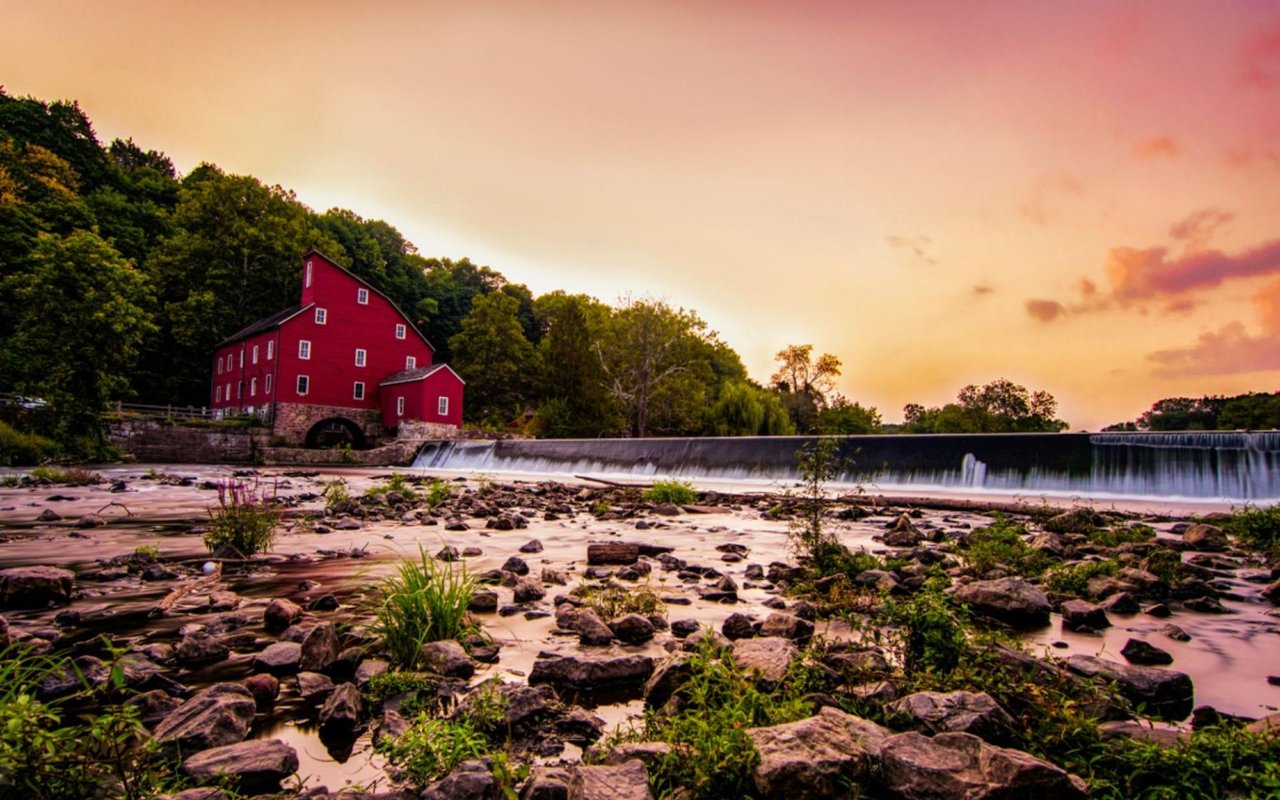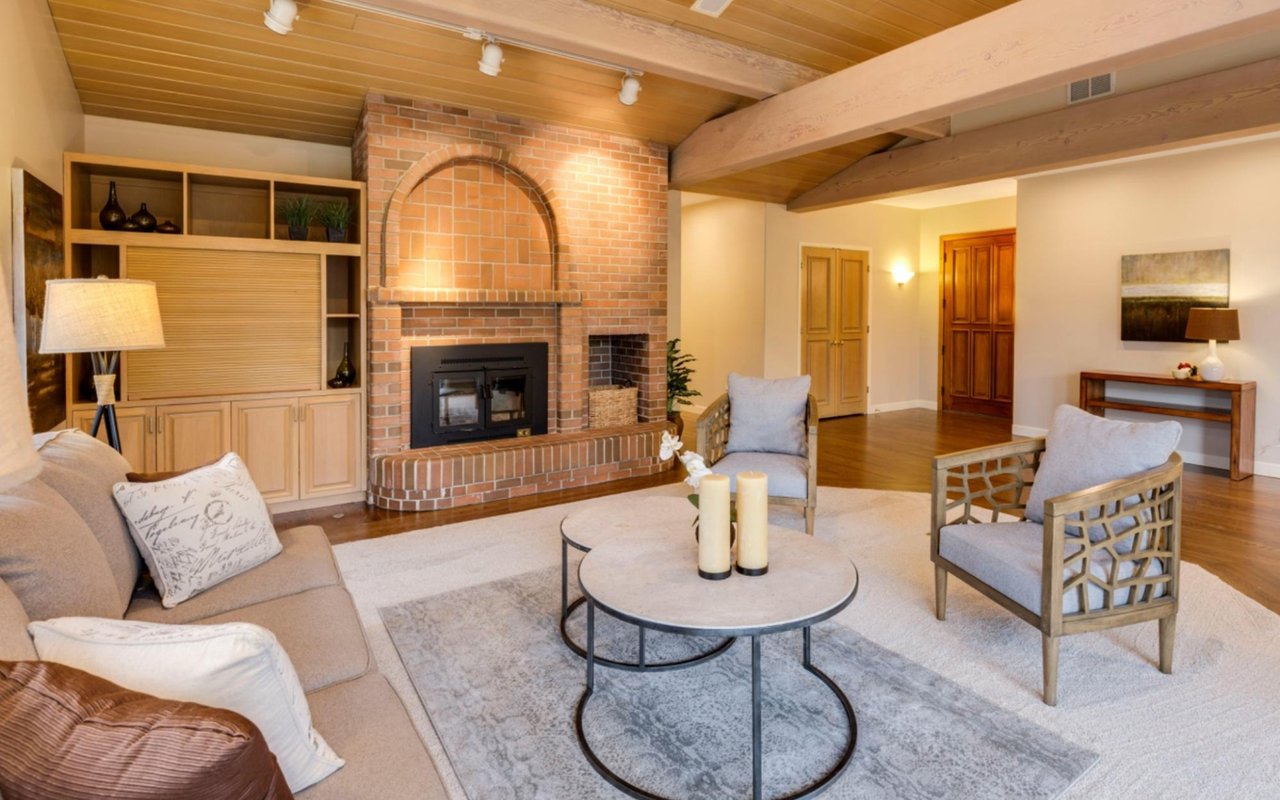Hunterdon County, New Jersey, is renowned for its picturesque landscapes, rolling hills, and charming small towns, but its architectural heritage is equally compelling. From colonial-era structures to Victorian homes and historic bridges, Hunterdon County's architectural landmarks offer a window into the past, showcasing the craftsmanship and architectural styles that have shaped the region over centuries. This guide unveils the top architectural landmarks in Hunterdon County, NJ.
The Red Mill Museum Village
One of the most iconic landmarks in Hunterdon County is the Red Mill Museum Village in Clinton. The Red Mill, built in 1810, is a testament to the region's industrial past. Originally constructed as a wool mill, it later served as a gristmill, plaster mill, and textile mill, reflecting the economic activities that sustained the area. With its vivid red exterior and picturesque setting along the Raritan River, the structure has become a symbol of Hunterdon County.
Today, the Red Mill Museum Village is a thriving cultural and historical center, offering visitors a chance to explore over 12 buildings on the site, each meticulously preserved to reflect different aspects of 19th-century life. The Red Mill itself, with its timber frame construction and iconic waterwheel, is a fine example of early American industrial architecture. The surrounding village includes a schoolhouse, a blacksmith shop, and a log cabin, providing a comprehensive view of the county's architectural and historical heritage.
Today, the Red Mill Museum Village is a thriving cultural and historical center, offering visitors a chance to explore over 12 buildings on the site, each meticulously preserved to reflect different aspects of 19th-century life. The Red Mill itself, with its timber frame construction and iconic waterwheel, is a fine example of early American industrial architecture. The surrounding village includes a schoolhouse, a blacksmith shop, and a log cabin, providing a comprehensive view of the county's architectural and historical heritage.
The Solitude House
In the nearby town of High Bridge, the Solitude House is another significant architectural landmark. Built in the early 18th century, the house is one of the oldest surviving structures in Hunterdon County.
Over the years, the Solitude House has been expanded and renovated, incorporating elements of the Federal style, which was popular in the late 18th and early 19th centuries. The house's interior features fine woodwork, including intricate moldings and mantels, which reflect the craftsmanship of the period. The house and its surrounding property offer a glimpse into the lives of the early industrialists who helped shape the region.
Over the years, the Solitude House has been expanded and renovated, incorporating elements of the Federal style, which was popular in the late 18th and early 19th centuries. The house's interior features fine woodwork, including intricate moldings and mantels, which reflect the craftsmanship of the period. The house and its surrounding property offer a glimpse into the lives of the early industrialists who helped shape the region.
Prallsville Mills
The Prallsville Mills, located in Stockton, is another architectural gem in Hunterdon County. This complex of historic buildings dates back to the late 18th and early 19th centuries and includes a gristmill, a sawmill, a linseed oil mill, and a granary.
The gristmill, the centerpiece of the complex, is a striking example of early American industrial architecture. Built in the Federal style, the mill features a stone exterior, large windows, and a traditional gable roof. The mill's interior retains much of its original machinery, providing visitors with an authentic experience of a 19th-century milling operation. The site is listed on the National Register of Historic Places, reflecting its importance as a well-preserved example of Hunterdon County's industrial heritage.
Flemington Historic District
Flemington, the county seat of Hunterdon County, is home to many architectural landmarks, many of which are concentrated within the Flemington Historic District. This district, listed on the National Register of Historic Places, encompasses over 60 buildings and showcases a variety of architectural styles from the 18th, 19th, and early 20th centuries.
Among the most notable buildings in the district is the Hunterdon County Courthouse, a Greek Revival structure built in 1828. The courthouse, with its stately columns and pedimented gable, gained national attention in 1935 when it served as the site of the infamous trial of Bruno Hauptmann, accused of kidnapping the Lindbergh baby.
The Flemington Historic District also features a range of Victorian-era homes, characterized by their ornate woodwork, steep gables, and decorative details. These homes reflect the prosperity of Flemington during the late 19th century when the town was a thriving commercial and agricultural center. Walking through the district, visitors can admire the diverse architectural styles, from Italianate and Gothic Revival to Queen Anne and Second Empire.
Among the most notable buildings in the district is the Hunterdon County Courthouse, a Greek Revival structure built in 1828. The courthouse, with its stately columns and pedimented gable, gained national attention in 1935 when it served as the site of the infamous trial of Bruno Hauptmann, accused of kidnapping the Lindbergh baby.
The Flemington Historic District also features a range of Victorian-era homes, characterized by their ornate woodwork, steep gables, and decorative details. These homes reflect the prosperity of Flemington during the late 19th century when the town was a thriving commercial and agricultural center. Walking through the district, visitors can admire the diverse architectural styles, from Italianate and Gothic Revival to Queen Anne and Second Empire.
The Green Sergeant's Covered Bridge
No exploration of Hunterdon County's architectural landmarks would be complete without mentioning the Green Sergeant's Covered Bridge. Located in the village of Sergeantsville, this charming bridge is the last remaining covered bridge in New Jersey, making it a unique and cherished landmark.
The Green Sergeant's Covered Bridge was originally built in 1872. It is constructed of wood with a traditional truss design and is covered with a gabled roof, typical of covered bridges from this era. The cover protects the wooden structure from the elements, extending its lifespan.
The bridge spans the Wickecheoke Creek, offering picturesque views of the surrounding countryside. In 1960, the bridge was partially dismantled to accommodate modern traffic, but residents successfully campaigned to have it restored to its original design. The Green Sergeant's Covered Bridge remains a beloved symbol of Hunterdon County's rural heritage and is a popular spot for photographers and history enthusiasts alike.
The Green Sergeant's Covered Bridge was originally built in 1872. It is constructed of wood with a traditional truss design and is covered with a gabled roof, typical of covered bridges from this era. The cover protects the wooden structure from the elements, extending its lifespan.
The bridge spans the Wickecheoke Creek, offering picturesque views of the surrounding countryside. In 1960, the bridge was partially dismantled to accommodate modern traffic, but residents successfully campaigned to have it restored to its original design. The Green Sergeant's Covered Bridge remains a beloved symbol of Hunterdon County's rural heritage and is a popular spot for photographers and history enthusiasts alike.
Explore Your Dream Home Amidst Architectural Beauty
Hunterdon County is a treasure trove of architectural landmarks that reflect its rich history and cultural evolution. If its historic charm and architectural splendor have captured your imagination, why not make this enchanting region your home?
Whether you’re looking for a charming period property or a contemporary home with historical character, contact Freeman Smith today to explore real estate opportunities in Hunterdon County.
Whether you’re looking for a charming period property or a contemporary home with historical character, contact Freeman Smith today to explore real estate opportunities in Hunterdon County.




